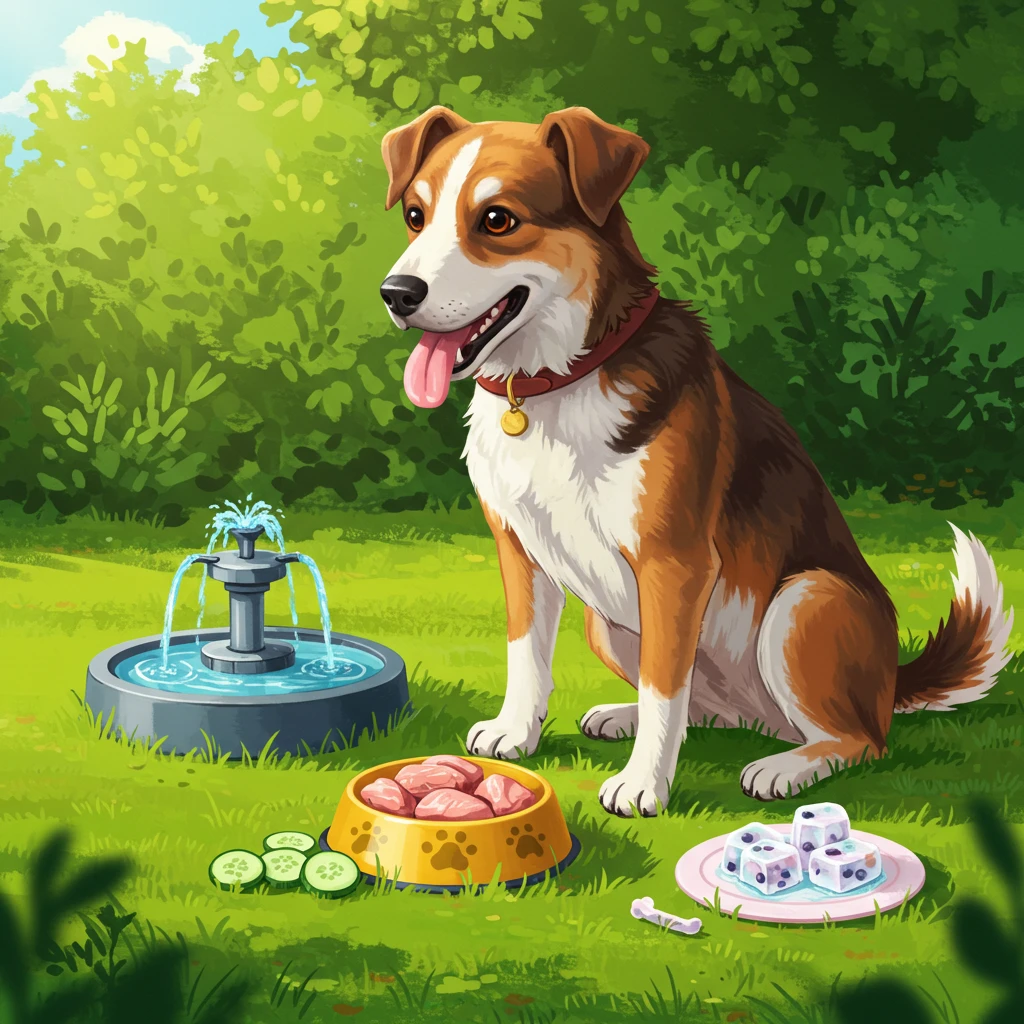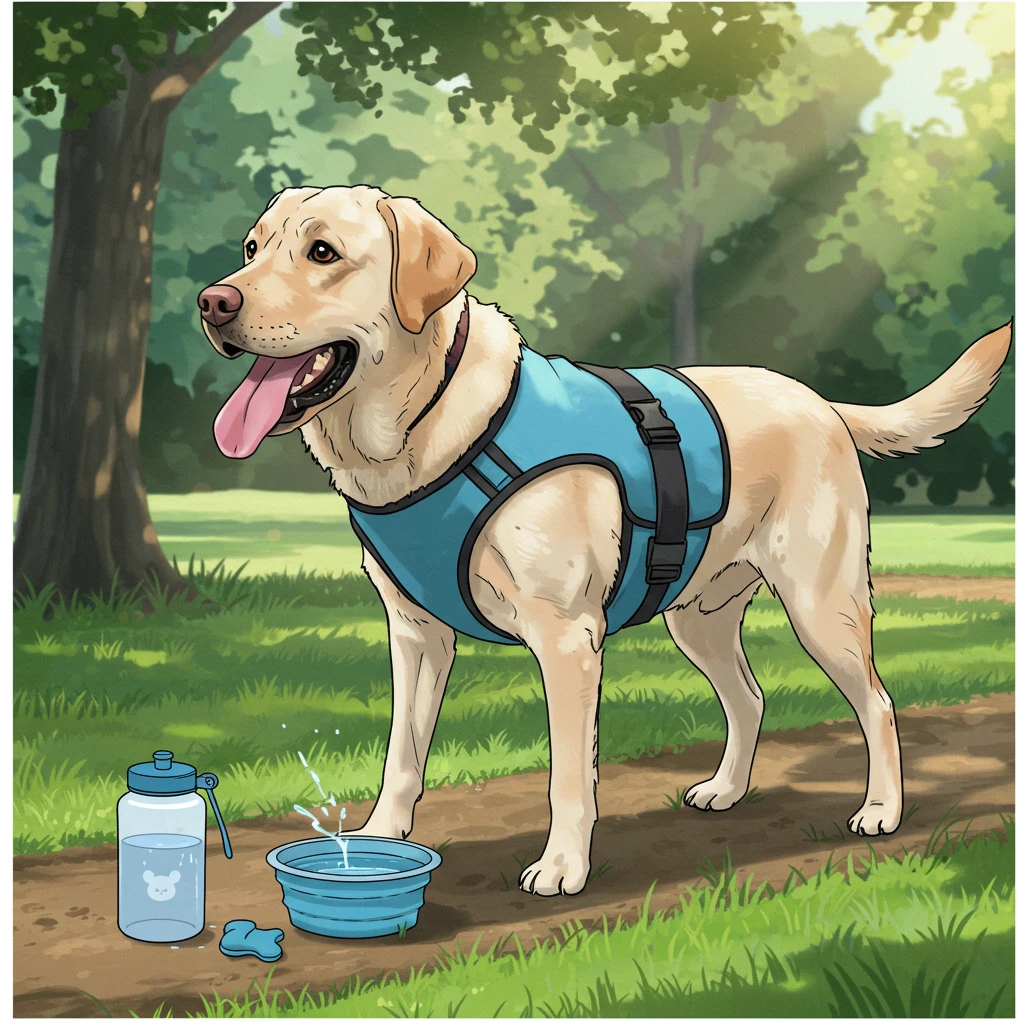As temperatures rise during the summer months, pet owners must be mindful of their canine companions’ dietary needs. Hot weather affects dogs just as it does humans, potentially leading to dehydration, heatstroke, and other health concerns. To ensure your dog remains healthy and comfortable, dietary adjustments are crucial. This article will explore the ideal dietary changes for dogs during hot weather, focusing on hydration and nutrition.
Importance of Hydration for Dogs in Hot Weather
Ensuring your dog stays hydrated is perhaps the most critical aspect of their summer care. Dogs can become dehydrated quickly in hot weather, which can lead to serious health issues.
Signs of Dehydration
- Lethargy: A tired or sluggish behavior.
- Dry Gums: Check for moisture in your dog’s gums; they should be wet.
- Excessive Panting: This is a sign your dog is trying to cool down.
- Loss of Skin Elasticity: Gently pull up on your dog’s skin; if it doesn’t snap back quickly, dehydration may be a concern.
Hydration Tips
- Fresh Water Access: Always ensure your dog has access to fresh, cool water. Consider using a pet water fountain to encourage drinking.
- Hydrating Foods: Incorporate hydrating foods like watermelon (without seeds) and cucumbers into their diet.
- Electrolyte Solutions: In severe heat, consider using pet-safe electrolyte solutions (consult your vet).
Nutritional Adjustments for Hot Weather
While hydration is paramount, nutritional adjustments also play a crucial role in keeping your dog comfortable during hot weather.
Light, Balanced Meals
- Lean Proteins: Opt for lean meats like chicken or turkey, which are easier to digest and won’t overheat your dog.
- Ample Vegetables: Vegetables like carrots and green beans can be excellent additions, providing essential nutrients without heavy calories.
- Smaller, Frequent Meals: Feeding smaller, more frequent meals can help with digestion and keep your dog energized without feeling overheated.
Avoid High-Fat Foods
High-fat foods can contribute to overheating and lethargy. Avoid heavy meats and treats high in fats. Instead, focus on balanced diets rich in nutrients but low in unnecessary fats.
Concrete Examples and Use Cases
-
Chilled Chicken and Rice Recipe:
- Ingredients: Boiled chicken breast, cooked white rice, and a few slices of cucumber.
- Preparation: Mix shredded chicken with rice and top with cucumber slices. Serve chilled or at room temperature.
-
Frozen Yogurt Treats:
- Ingredients: Plain, unsweetened yogurt, blueberries, and a splash of water.
- Preparation: Blend ingredients and pour them into ice cube trays. Freeze and serve as a cooling treat.
-
Hydration Broth:
- Ingredients: Low-sodium chicken broth and water.
- Preparation: Mix equal parts broth and water. Freeze in a bowl or mold for a tasty, hydrating snack.
Key Points and Best Practices
- Monitor Water Intake: Ensure your dog drinks enough water; use bowls that keep water cool.
- Regular Vet Checks: During extreme weather changes, regular vet visits can preemptively catch any health issues.
- Avoid Exercise in Peak Heat: Schedule walks during cooler parts of the day, like early morning or late evening.
- Watch for Paws: Pavement can become scorching hot, so ensure your dog walks on grass or cooler surfaces.
FAQ
1. Can I give my dog ice cubes during hot weather?
Yes, ice cubes can be a safe way to cool your dog down. They can chew on them or lick them to stay hydrated. However, always supervise to prevent choking.
2. How much water should my dog drink in hot weather?
A general rule is one ounce of water per pound of body weight per day. However, in hot weather, your dog may require more. Always ensure fresh water is available.
3. Are there foods I should avoid giving my dog in hot weather?
Avoid high-fat foods and heavy meals. Also, be cautious of foods that can upset your dog’s stomach, such as those high in sugar or spices.
4. What signs indicate my dog is overheating?
Signs of overheating include excessive panting, drooling, weakness, vomiting, and a rapid heartbeat. Seek immediate veterinary care if these occur.
5. Can I walk my dog during midday in hot weather?
It’s best to avoid walking your dog during the hottest parts of the day. Early morning or late evening walks are safer and more comfortable for your pet.
Conclusion
Adjusting your dog’s diet during hot weather is crucial to maintaining their health and comfort. By focusing on hydration and providing a balanced, nutritious diet, you can help your dog navigate the challenges of summer heat. Remember to monitor your dog for signs of dehydration and overheating, and consult your veterinarian for personalized advice. For more tips on keeping pets safe in hot weather, visit ASPCA’s Hot Weather Safety Tips.
By implementing these dietary adjustments and best practices, you can ensure your furry friend enjoys a safe, healthy, and happy summer.







